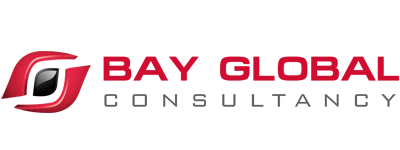Competency Framework and its Benefits
A competency framework is a comprehensive structure which describes different competencies with its specific set of behavioral indicators and measurement criteria.
Most of the organizations have their own distinct set of competency framework which is in alignment
Most of the organizations have their own distinct set of competency framework which is in alignment to their visions and mission and long and short term organizational goals.
There are certain clear benefits of the competency framework for the organizations:
- A common understanding of critical success factors and desired behaviors within the organization
- Integration of organizational process to competencies helps the interpretation of big picture concerns in day to day working [e.g. Situation of a new product launch and the competency Customer Focus valued by the organization]
- Better management and effective decisions regarding cost intensive processes like selection, hiring and promotions
- Assessment, feedback and communication regarding performance becomes standardized thus facilitating a common culture
Generally, competencies have behavioral indicators as their building blocks, related behaviors are grouped under a competency and similar theme of competencies are further grouped together to form clusters. Ideally, a cluster of 8-12 competencies are found to be sufficient but one can also come across frameworks containing more than 15 competencies.
Key points to consider while developing a competency framework:
- The description should be as specific as possible to remove any traces of ambiguity
- The language needs to be simple to make it comprehensible to the larger audience
- The structure has to be simple and logical
- The framework should be relevant for all the people using it and being affected by it
- The framework should take into account unexpected changes that might affect organizational transactions, which means that it should clearly outline the behaviors that describe the manner in which the job incumbents are to perform in immediate and mid-term future
- There should be no duplication or repetition of behaviors in the framework
- The behaviors should be distinct and describe just one aspect or one behavior, combination of two aspects may lead to a situation where an individual might be good at the first but poor at the second aspect
Thus a Skill is something learned in order to be able to carry out one or more job functions. Whereas, Competencies may incorporate a skill, they are MORE than just skills; Competencies include abilities and behaviours, as well as the knowledge that is fundamental to the use of a skill.
Therefore, Skills are specific learned activities like accounting, financial analysis and using a computer, while Competencies are skills + knowledge + behaviour like problem-solving, communication, or professionalism.
Example:
A person can become a good presenter (Skill) through practice, learning from others, and education. However, to be a strong communicator (Competency) one must rely on a combination of skills PLUS behaviour and knowledge.
A person can learn how to be a good presenter but only a strong communicator has advanced language skills, the knowledge of diverse cultures, and behaves patiently when communicating.
Let us look at an example of a competency framework for a CEO of an SBU:
Do you observe the rating scale in the above diagram? It transcends from a behavior displayed which is ineffective or needs development to a behavior which is highly effective. The above way of measuring competency is called Behaviorally Anchored Rating Scale or BARS.
BARS is nothing but the description of the behaviors for ineffective and effective performance as shown above which when displayed by the participant or the person under observation in exercises like role plays, presentations or structured interview; is then anchored or placed at the appropriate point on the scale. The measures and descriptions of the scales are developed through a comprehensive process of job analysis using methods like critical incident technique, structured interviews etc. The scale usually ranges from 3-5 but in rare cases can go up-to 7 which becomes complex and difficult to use and therefore avoidable.
A competency framework might be developed from the scratch in a place where it does not exist or an existing framework can be expanded to make it more useful. Whatever might be the case but it would be useful to consider the following:
- Involvement of people in developing the framework, which creates a buy-in and an ownership
- Keeping people well informed about the developments while also explaining the objectives and reasons behind them
- Identifying and creating competencies which are relevant to the organization
With a robust competency framework and HR processes in alignment to the framework gives an organization a competitive edge in the dynamic labor market and facilitates the brand of the organization as an employer.








